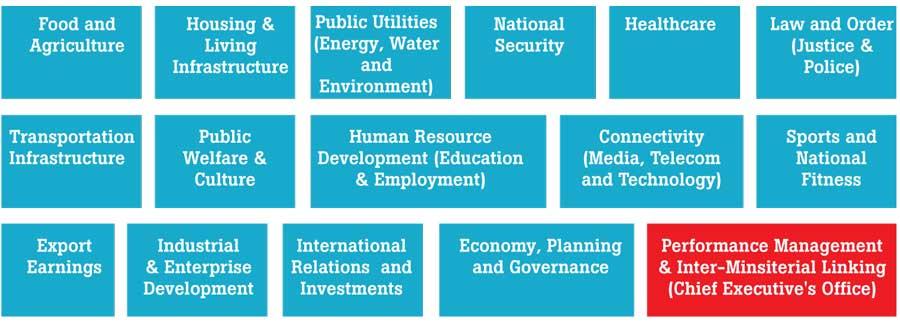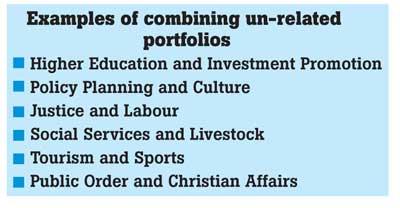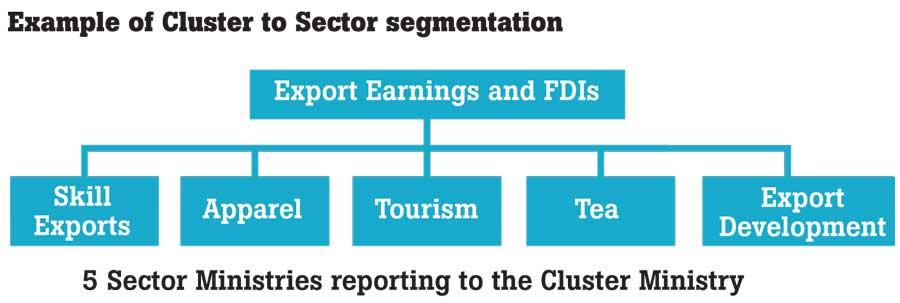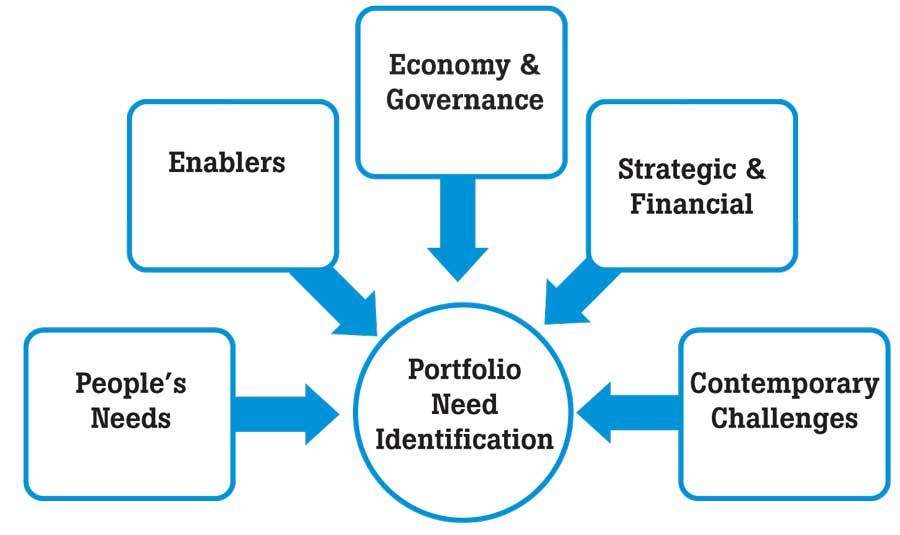Reply To:
Name - Reply Comment

The decision to limit the Cabinet to 15 (and sans the entourage of deputies and state ministers), be it motivated by legislation or the new leadership, is certainly a step in the right direction.
Hope it stays this way - in terms of the cadre of ministers. No comments on the competency-fit of the person to the job - as the ‘talent’ pool you have to select the ministers is limited. Hope this gets fixed at the next general election, so that there is a more competent ‘talent pool’ to select from.
The focus of this piece though is on how to allocate the ministerial portfolios. In the current allocation, there seems to be some effort to group related subjects together, it is not significantly different to what it was earlier with a much bigger entourage of ‘traffic stoppers’ (hope this practice stops!). In both cases, what has been done is to take the existing portfolios (in its legacy definitions) and allocated among the ministers. Therefore, it still remains a unwieldly allocation of portfolios - which lacks focus on clear end deliverables that benefits the population (which should be the ultimate intent of a minister’s job).
Therefore, MTI Consulting has applied proven re-structuring principals and models to arrive at an optimal cabinet portfolio allocation. Admittedly, MTI’s experience is in organisational re-structuring and not cabinet re-structuring, but feel confident that strong principals and models are equally applicable (with intelligent customisation) to re-structuring the cabinet. In any case, given the legacy practices in which cabinet portfolios have been allocated in the last 70 years, it can certainly benefit from a fresh, outside-in approach, which is what MTI Consulting is recommending in this piece.

Structuring Considerations in arriving at the above

How was this Ministerial Portfolio Structuring arrived at?
Structuring any organisation, irrespective of size and type, needs to be aligned to the purpose, direction and strategy of the organisation. This needs a very scientific approach, using purpose-specific structuring frameworks and an inclusive process of facilitating stakeholder involvement. If this process is entirely left to politicians, then it tends to be driven by political motives and not by what is in the best interest of the people of a country.
The effectiveness of a government is significantly determined by the way it is structured, starting with the scoping and segmentation of the ministries - because all other government institutions are structured based on this ‘super structure’.
Governments tend to carry on with historical structures, with incremental portfolios added as and when the need arises (e.g: technology, disaster management, national integration etc.) or combining unrelated portfolios.
There has also been a tendency to create a plethora of micro focused responsibilities (e.g. wild life, botanical gardens, private transportation). The net result of all these is a cluttered portfolio of ministries that lack focus. The installation of a new government is an ideal opportunity to go completely ground-zero and develop the ministerial portfolios based on the strategic needs of the country. Such a process could then lead to rationalising and re-structuring/re-scoping the large number of state institutions that operate within the ministries.

Step 1: Go completely ‘Ground Zero’
Which means assume none of the current ministerial portfolios exist and avoid any reference to any current ministerial names, even later on in the process.
Step 2: Apply ‘People’s Need’ as the first basis of structuring
Governments exist only to serve/meet the needs of people. Therefore, in structuring the government, it should be based on the specific needs of the people. Start with basic human needs, hierarchically exploring all types of physical, physiological, social, safety and economic needs. If the above is applied to the Government of Sri Lanka, the first-cut based on people’s need will be as follows:
Step 3: Identifying the ‘Economy and Governance’ based Ministerial Needs
Beyond the people’s needs, at a macro level the government needs to manage the economy and ensure effective governance (including the effective management of all other ministries)- this then leads to the need for other ministries.
In order to ensure and manage all portfolios identified (applying multiple criteria), what types of economic management and governance functions needs to be undertaken? Accordingly the following has been identified as the ‘first-cut’ list.
Step 4: Strategic and Financial implication for Ministerial Portfolio
In identifying the ministries based on the ‘People’s Needs’ and ‘Economy and Governance’, there is tendency for wide variation in the scope and scale of the ministries identified and therefore some key functions may not get adequate focus. Estimating the strategic and financial value of the portfolios (identified under each of the other modules) and then deciding which ones require further segmentation.

Step 5: Contemporary National Challenges - that demand ministerial focus
The world we live in today confronts us with dynamic socio-economic and political challenges, which governments need to respond and in some cases there needs to be institutions to manage/respond to these challenges.
Evaluate all the current/emerging socio-economic and political challenges that the country encounters and decide if any of these warrant a dedicated portfolio. Accordingly, for Sri Lanka the following have been identified.

Step 6: Ministries that are needed for the ‘Enabling’ role
When identifying the ministries based on the criteria under Steps 2 to 5 , the focus is on the front-end needs, consequently the enabling ministries (also known as back office or shared services functions) do not get captured.
For each of the ministries identified thus far, examine the need for the enabler role, based on which the following has been identified.
Step 7: Rationalise the 36 Ministerial needs that were identified by applying the five structuring criteria
Applying the five different criteria, we have arrived at 36 portfolios of varying scopes. While this is exhaustive, there is the possibility of over-laps and more importantly the need to rationalise and merge some of the portfolios - in the pursuit of ensuring a maximum of 15 Cluster Ministries (considered an optimal number).

Step 8: Arriving at the final list of 16 ‘Cluster Ministries’
by applying the following structuring principles:
Strategic synergies: where more than one portfolio can be merged for strategic and link reasons.
Specialisation and Separation: where portfolios need to be kept very distinct - despite not justifying sufficient ‘workload’ and responsibility to match the other portfolios.
Use of contemporary terms that reflect the above and the ‘end-user’ expectations.
“This is only one example of the Ground-Zero model application - the end result depends on the quality of thinking and intellect that goes into the process. There could be several outcome possibilities and that’s not an issue, as long as there is process integrity and rigor.”

Step 9: Each of the ‘Cluster Ministries’ are then further segmented into ‘Sector Ministries’ - using the same structuring princiwples as above
Step 10: Set KRAs and KPIs - each minister’s performance appraisal to be presented to both the parliament and the public. Then, apply the process down to the next level of government departments and SOEs.
Key Takes: